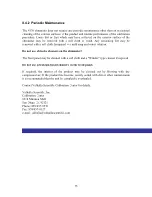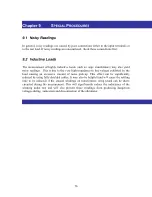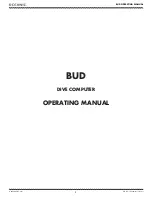
8
1
10.5.2
Constant-Current Source
The constant-current source provides the stable current necessary to generate the precise
voltage drop across the load. The design of the current source compensates for all series
resistance (within compliance voltage limits) to overcome the effects of test lead and
contact resistances. The complete current source circuitry is shown on drawing 4176-700
sheet 2.
10.5.2.1
Reference Generator
As a stable and accurate reference, the current source circuitry uses a +6.95VDC
regulator (U23). The voltage level of the regulator can be checked by measuring the
voltage across TP8 and TP9.
10.5.2.2
Reference Inverter Stage
U24 and its associated components form an amplifier stage having a gain of -.144. This
stage is used to convert the +6.95 VDC reference voltage to the negative 1 volt reference
required by the current source. This voltage level can by checked by measuring the
voltage across TP10 and TP9.
10.5.2.3
Differential Amplifier
U25 and its associated components form a unity gain differential amplifier. The output of
the Reference Inverter stage (V
REF
) and the output of the Output Amplifier (V
OUT
) form
the inputs to this amplifier. The output voltage from this amplifier is thus given by:
REF
OUT
V
V
Output
Amp
Diff
−
=
10.5.2.4
Output Amplifier
U26, Q6, Q7, the range resistors R50 through R58, and the potentiometers RV2 through
RV7, combine to form the output amplifier of the current source. The range resistors and
potentiometers determine the value of the output current. The voltage drop across these
resistors (V
OUT
) is used as an input to the Differential Amplifier to provide error
correction and to compensate for varying loads.



































